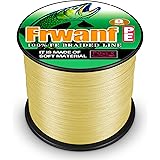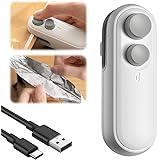Have you ever dreamt of a true wilderness escape, where the journey is as epic as the destination, and your dinner is caught fresh from pristine waters? The adventure shared in the video above offers a compelling glimpse into such an experience, a multi-day backcountry canoe trip deep within Woodland Caribou Provincial Park.
This isn’t just a casual fishing trip; it is an immersive eight-day expedition, commencing with a float plane drop-off and involving extensive paddling and portaging. After a grueling 30-hour drive to the staging area, followed by a seven-day wilderness journey, the anticipation for a specific catch runs high. The quest for elusive lake trout becomes a central theme, providing both challenge and immense satisfaction.
Into the Wild: Woodland Caribou Provincial Park Expedition
Woodland Caribou Provincial Park, nestled far up north, epitomizes the remote Canadian wilderness. Access to such pristine environments is often facilitated by unique modes of transport, such as the float plane that delivered Joe and his friend Sean seven days prior to the primary events of the video.
These multi-day canoe and fishing trips test endurance and skill, demanding careful planning for provisions and gear. Navigating a network of lakes and rivers requires constant effort, including numerous portages where canoes and equipment must be carried overland between waterways. Such expeditions are specifically designed for those who seek to truly disconnect and immerse themselves in nature, away from the trappings of civilization.
The Quest for Lake Trout: A Seven-Day Pursuit
Throughout their journey, Joe had already achieved remarkable angling success, having landed a 37-inch pike and a “monster walleye,” among many others. However, as the trip approached its end, a significant target species remained elusive: the lake trout.
A personal goal of catching his first lake trout became a driving force, especially as the last full day of their adventure dawned. Lake trout are often found in deep, cold waters, making them a unique challenge for anglers. The shift to specific lake trout habitats late in the trip highlights a strategic approach to angling, ensuring all target species are pursued.
Effective Tactics and Tackle for Wilderness Lake Trout Fishing
Successfully targeting lake trout in a wilderness setting often involves adapting techniques and choosing the right tackle. In the video, a clear shift in strategy is observed when Joe decides to abandon his “stick bait nonsense” and switch to a spoon, specifically a Len Thompson.
Large, flashy spoons are frequently employed for lake trout, particularly when trolling or casting in deeper waters. The reflective action mimics injured baitfish, making them irresistible to predatory lake trout. The Cyclops spoon, mentioned by Sean, is another well-regarded option known for its erratic wobble and versatility, proving effective in diverse conditions.
The Thrill of the Catch: Back-to-Back Lake Trout Success
The moment of truth arrives with electrifying intensity when Sean hooks a “big lake trout” on a Cyclops. The battle is fierce, characterized by powerful dives and runs, indicative of a strong, healthy fish.
This initial success fuels Joe’s determination, and within moments, he too lands his first-ever lake trout on his trusty Len Thompson spoon. The elation is palpable, marking a significant personal milestone and a perfect culmination to the seven days of fishing. These back-to-back catches suggest the fish were schooling, likely found in a concentrated area, a common behavior for lake trout in productive waters.
Wilderness Feasting: The Ultimate Catch and Cook Experience
In a remote backcountry setting, fresh food is a luxury that transforms a basic meal into an unforgettable feast. The desire to avoid “eating rice again for dinner” underscores the profound joy derived from a successful “catch and cook” venture.
The plan to cook the lake trout in a reflector oven is a testament to sophisticated camp cooking. A reflector oven, like the Sma-Te Frijden from Sweden, mentioned as sourced from Canadian Outdoor Equipment, utilizes radiant heat from a campfire to bake or broil. This method allows for evenly cooked fish, ensuring a moist and flavorful result without direct contact with the fire.
Broiling and Stuffing: Campfire Culinary Delights
Joe’s approach involves broiling his lake trout, enhanced with a sprinkle of lard, a knob of butter, and a squeeze of lemon. This simple yet effective method highlights the natural flavors of the fresh fish, which is cooked to perfection in approximately 15 to 20 minutes in the reflector oven. The dripping fat and golden-brown skin are visual cues of a perfectly prepared meal.
Conversely, Sean opts for a more elaborate preparation, stuffing his deboned lake trout with a pre-made mixture of breading, seasonings, and dried vegetables from home. This stuffed fish is then roasted for about half an hour in the reflector oven, offering a rich, aromatic dish. Both methods showcase how fresh wilderness catches can be transformed into gourmet camp meals, far exceeding the expectations of typical dehydrated trail food.
Beyond the Catch: Embracing the Full Backcountry Experience
While fishing and cooking are highlights, a wilderness trip encompasses a multitude of experiences. The final portage into Royd Lake, their pickup lake, signifies the impending end of the adventure, bringing a mix of relief and nostalgia.
Even small moments, such as observing dragonflies emerging from their exoskeletons by the water’s edge, contribute to the richness of the experience. These observations connect the adventurers more deeply with the natural world around them. Finding the perfect peninsula campsite for their last night ensures a memorable conclusion, setting the stage for one last peaceful evening under the stars before their float plane return.
Preparing for Your Own Wilderness Fishing Adventure
Inspired by such a compelling journey, aspiring wilderness anglers and campers might consider their own expeditions. Careful planning is paramount for a multi-day backcountry trip, particularly when access is via float plane.
Essential gear includes robust canoes or kayaks, navigation tools, first-aid supplies, and appropriate clothing for varied weather conditions. For the “catch and cook” aspect, a portable cooking system like a reflector oven is invaluable, alongside basic spices, fats, and any specific ingredients like lemons or homemade stuffing. Researching the local fish species and their habits, as well as obtaining necessary permits and licenses for parks like Woodland Caribou Provincial Park, is crucial for a successful and legal adventure. Familiarity with fishing techniques suitable for lake trout, such as trolling with spoons or jigging in deeper water, will significantly increase the chances of a rewarding catch.
The profound satisfaction derived from successfully navigating challenges, achieving fishing goals, and enjoying fresh, wild-caught food directly from the lake cannot be overstated. A wilderness lake trout fishing trip truly offers an unparalleled connection to nature and an unforgettable sense of accomplishment, reinforcing why such remote adventures are deeply cherished.








